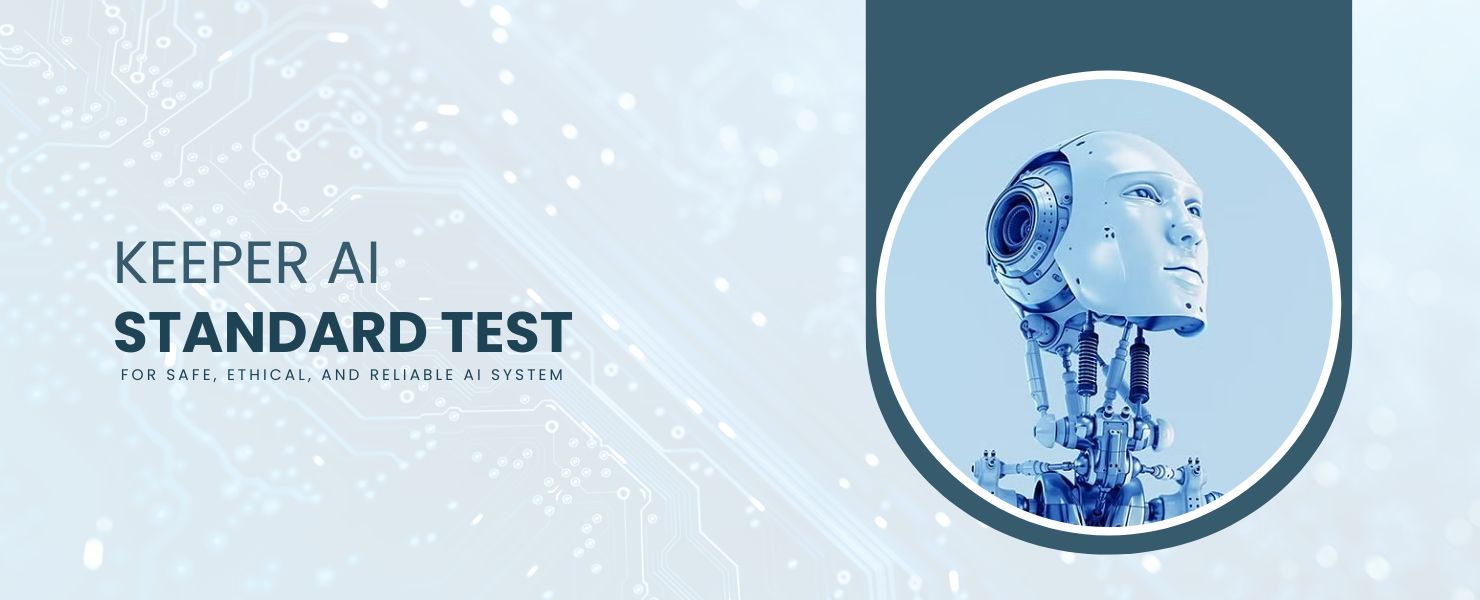Artificial Intelligence (AI) is transforming industries, but it raises safety concerns. The Keeper Standards Test evaluates AI systems to ensure they are safe, ethical, and reliable. This comprehensive guide explores what the test entails, why it’s important, and how it impacts the future of AI.
What Is the Keeper Standards Test?
The Keeper Standards Test is a structured evaluation designed to assess the safety and ethical compliance of AI systems. It provides benchmarks to determine whether an AI meets industry standards for functionality, security, and user trust.
Key Objectives
- Safety: Ensuring AI behaves predictably and avoids harm.
- Ethics: Aligning AI actions with societal values.
- Reliability: Guaranteeing consistent performance under varying conditions.
By incorporating principles from industry leaders and global AI ethics guidelines, the Keeper Standards Test safeguards users and organizations relying on AI.
Why Is the Keeper Standards Test Important?

1. Mitigating Risks
AI can amplify risks if not properly controlled. The Keeper AI Standards Test identifies vulnerabilities, such as bias or susceptibility to malicious attacks.
2. Building Trust
Trust is critical for adoption. When users see that an AI has passed the Keeper Standards Quiz, they know it meets stringent requirements just like ReadEra that pays special attention on building trust by providing the exact information.
3. Encouraging Accountability
The test ensures AI creators are accountable for ethical and performance issues, promoting transparency in development.
4. Regulatory Compliance
Governments and organizations increasingly require AI systems to pass standardized tests. The Keeper Standards Test aligns with these regulations.
How Does the Keeper Standards Test Work?
The process involves multiple stages of evaluation, each targeting specific aspects of AI functionality and compliance.
Stages of the Keeper AI Test
| Stage | Focus Area | Examples of Evaluation |
| Pre-Evaluation | Analyzing the AI’s foundational design and training data. | Identifying biases in datasets or flaws in algorithms. |
| Safety Assessment | Testing the AI for predictable behavior in real-world scenarios. | Simulating ethical dilemmas and ensuring logical decisions. |
| Performance Review | Measuring reliability under varying conditions and stress. | Testing AI in diverse user environments to ensure adaptability. |
| Ethical Audit | Ensuring the AI aligns with societal norms and ethical guidelines. | Avoiding harmful actions or discriminatory outcomes. |
| Post-Deployment | Continuous monitoring after implementation to identify new risks and areas for improvement. | Regular updates to keep the AI aligned with changing regulations or standards. |
Benefits of the Keeper Standards Test

For Organizations
- Reduces legal and reputational risks.
- Enhances customer trust and satisfaction.
- Streamlines compliance with global AI regulations.
For Users
- Ensures safer interactions with AI-powered tools.
- Promotes fairness and inclusivity in AI outcomes.
For the AI Industry
- Establishes a universal benchmark for AI safety.
- Encourages innovation while maintaining ethical boundaries.
Challenges in Implementing Keeper Standards Test
While the test offers immense value, it comes with challenges:
- Complexity: AI systems are intricate, making evaluations time-intensive.
- Cost: Smaller companies may struggle with the financial burden of rigorous testing.
- Evolving Standards: The rapid pace of AI advancements requires frequent updates to testing frameworks.
Despite these hurdles, the Keeper AI Standards Test remains a critical tool for fostering safe AI ecosystems.
Best Practices for Passing the Keeper Standards Test

To ensure your AI system succeeds in the Keeper Standards Quiz, follow these steps:
- Diverse Training Data: Avoid biases by using comprehensive datasets.
- Transparent Algorithms: Make your AI processes interpretable.
- Rigorous Testing: Conduct preemptive safety and ethical checks.
- Regular Updates: Adapt to evolving standards and regulations.
FAQs
It’s a comprehensive evaluation to ensure AI systems meet safety, ethical, and performance benchmarks.
The test mitigates risks, builds trust, and ensures AI systems comply with regulatory and ethical standards.
It evaluates AI systems across multiple stages, including safety, performance, and ethical compliance.
Yes, but they may face challenges like costs. Open-source tools and partnerships can help reduce the burden.
Developers must address identified issues and retest the system before deployment.
Conclusion
The Keeper Standards Test is a vital step toward ensuring the safe and ethical development of AI systems. By establishing benchmarks for safety, performance, and accountability, it promotes trust and reliability in AI technologies. As AI continues to evolve, adhering to such standards will remain essential for a secure and equitable future.

